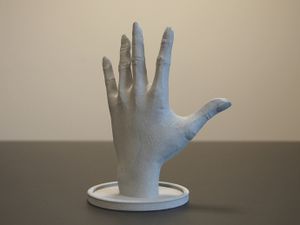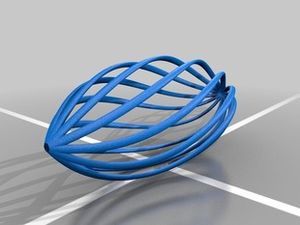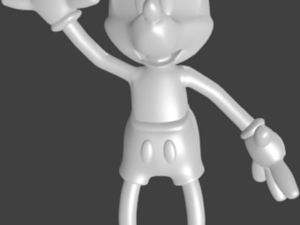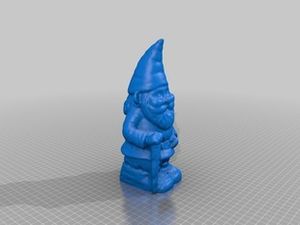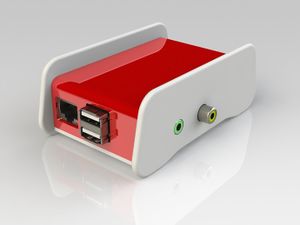User:MadelineRoche
Contents
Introduction
My name is Madeline Roche and I am a Senior at The Pennsylvania State University majoring in Psychology. I intend to graduate in May 2014.
BLOGS
Weekly blogs are assigned by the professor and my answers to the prompts will be displayed here. These blogs will relate to 3D Printing and sometimes more specifically the RepRap printers
Blog Number One
The Prompt: Go to thingaverse and look for printable objects, which other people have actually printed finding designs which satisfy these descriptions in your mind:
Part A
An item that is useful
This item is useful for holding rings, and even bracelets. Use of this item can prevent the loss of jewelry, a very common issue as these items are typically so small.
An item that is artistic/beautiful
This football has rhythmic twists and curves creating a beautiful spiral football. The spiral effect is intricate and artistic.
An item that is pointless/useless
This Mickey statue is useless. Although it may bring joy to Mickey fans, it does not serve any concrete practical purpose.
An item that is funny/weird
This gnome statue is funny because he is carrying a pimp cane. This is something I have never seen before, so I found it not only funny, but also weird.
The 'Best' printable Raspberry Pi case you can find
This raspberry pi case is both sleek and small, and was designed for 3D printing.
Blog Number Two
The Prompt:
Write about a topic (or two, or three) which interests you which we've discussed so far - or not discussed in detail yet.
It could be your project, or a particular type of 3D printer, or something you think would be cool for us to explore in the future.
3-D Printing Implications for China
As 3-D printing continues to develop and expand, China will have to give up their role as the mass-manufacturing powerhouse of the world. China has partnered with every economically mature country to outsource manufacture all their goods on a mass scale. They create enough demand to mass produce extremely cost efficiently and minimize labor costs. The Chinese government favors the growth of the country’s manufacturers over the purchasing power and living standards of its people/consumers. However, as 3-D printing advances and becomes widely implemented in manufacturing, China faces several challenges. The first being that mass manufacturing supply chains won't be a good fit for 3-D printed manufacturing. Mass manufacturing uses centrally controlled supply chains to produce our everyday goods, or commodity products. This centrally managed approach won't work well as highly specialized 3D-printed parts begin to play an increasing role in the mass-production of products. Under 3-D printing's model of widely distributed, highly flexible, small-scale manufacturing, the advantages of China's current manufacturing model quickly become burdens. 3-D printing enables manufacturing on a smaller scale and closer to the location of consumption. Not even China's workforce can be paid little enough to make up for the cost of shipping across oceans. Furthermore, few managers raised in a pro-producer environment have the consumer instincts to compete with the customization of 3-D printing. The strategies that have placed them in their current position won't serve them in the future. However, their local market is still huge, so a locally-based market will likely not make them the outcasts of the 3-D printing era.
In comparison to the United States and Europe, China is off to a slow start with 3-D printing, but they are making strides. A fun fact portraying this is that in Chinese astronauts' most recent space flight they sat in 3D-printed seats. Each seat was tailored specially for that particular astronaut’s unique size and shape. I will be interested to see how China adapts to the concept of 3-D printing and its implications on their role as lead manufacturer to the rest of the world.
Blog Number Three
The Prompt: Comment on the best posts from classmate blogs
I really enjoyed reading Steven Rekstad's second blog in which he discusses deep space travel as an application for 3-D printing. The subject of deep space travel alone is interesting enough, but I really liked his innovative way of thinking here, and his ability to so practically apply 3-D printing. He brings up several good reasons why 3DP would benefit deep space travel, such as: it can quickly create emergency repairs, and a RepRap's lightweight quality will not weigh down the shuttle upon takeoff. Steven has some great thoughts here, and even shows a little sense of humor, making it an even better read. However, there is always room for further detail and elaboration.
Blog Number Four
The Prompt: Comment on each project, and their mode of operation (give it away for free). How does this compare with traditional business models? Can you point to any companies using a similar business model? How does this sort of thing strike you?
Traditionally speaking, most business models consist of making a profit by selling a good for a higher price than what that product cost to create. However, the business model being employed by both Arduino and RepRap is quite different than this. Both Arduino and RepRap are open-source companies. This means that their products can be accessed free of charge to the consumer. The companies are then able to create revenue from other sources on the side. One company that sort of reminds me of this business model is Olympia Media Group. This company is able to distribute a weekly publication free of charge to consumers, thereby increasing the amount of people who may come in contact with the publication. The way that they are able to make their money for this is by selling advertisements that are then displayed in the publication. I think this open-source method being used by Arduino and RepRap is an incredible idea, as it does not limit the pool of people who can collaborate with this sort of technology. This enables free input from 7 billion designers, greatly increasing the ability for advancement.
Blog Number Five
The Prompt:
Blog Number Six
The Prompt:
Blog Number Seven
The Prompt:
Blog Number Eight
The Prompt:
Blog Number Nine
The Prompt:
Blog Number Ten
The Prompt:
Blog Number Eleven
The Prompt:
Blog Number Twelve
The Prompt:
Blog Number Thirteen
The Prompt:
